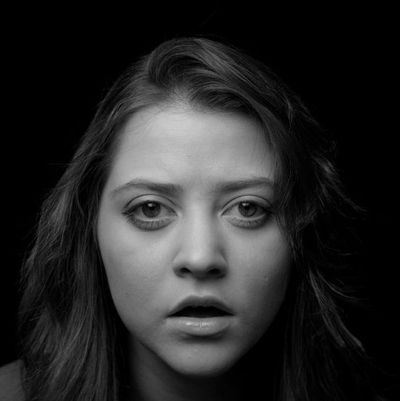
ÔÇ£Nothing in the world can be compared to the human face,ÔÇØ said the great Carl Theodor Dreyer, and in his transfixing, perplexing new film, Visitors, Godfrey Reggio seems to be taking this sentiment to heart. Reggio is the enigmatic monk turned visionary filmmaker who in 1980 revolutionized cinema with Koyaanisqatsi, an Olympian montage of immaculately captured documentary footage portraying the beauty, horror, and enormity of life on Earth, all set to an iconic soundtrack by Philip Glass. The film was a lament for a world at odds with nature, but it was also so hypnotic and gorgeous and unshakeable that ReggioÔÇÖs style of filming and editing quickly became embraced by advertising; its pervasive influence can still be felt today.
Undeterred by what he called ÔÇ£the BeastÔÇØ appropriating his language, Reggio made two more films in what would be called the Qatsi Trilogy. His latest is still very much in that vein ÔÇô again we have a montage of images set to music, and again we have a (wonderful) Philip Glass score. But this time, instead of focusing on stylized cityscapes and surreal desert vistas and memorials to manÔÇÖs folly and ambition, heÔÇÖs tackled a seemingly more intimate subject: Most of Visitors unfolds as a series of black-and-white shots looking straight at humans as they stare back at the screen, registering, usually in slow-motion, the most minute changes in gesture. A blink, or a slight tensing of the lips, suddenly gains monumental significance. Also, there is a gorilla.
Yeah, about that gorilla. ItÔÇÖs the image that opens the film, and itÔÇÖs also a little too blunt a symbol, though weÔÇÖre not quite sure for what. Reggio is a filmmaker who can somehow be both unsubtle and oblique: You know he means something, though he doesnÔÇÖt always want you to figure it out so easily. In this case, the gorilla could stand for evolution ÔÇô the common ancestor that all the faces weÔÇÖre about to see share? Or maybe itÔÇÖs nature staring back at us, a kind of ever-present judge, a spectral reality that haunts the film? Or maybe itÔÇÖs just a gorilla. At any rate, itÔÇÖs a beautiful one.
As Visitors unfolds and you regard the faces that Reggio presents, you may find yourself reading different things into their expressions, depending on your mood. Is that blankness we see, or wisdom? Sadness, or defiance? Since we never know what these people are watching ÔÇö itÔÇÖs probably not us theyÔÇÖre watching, though it often feels like it is ÔÇö thereÔÇÖs a certain parlor-game quality to it. That man with his mouth wide open, is he screaming, or yawning, or laughing? Freed of context and slowed down to the extreme, everything becomes abstract, malleable. When Reggio finally cut to a group of people who were more animated than the individual, immobile faces weÔÇÖd previously seen, I started to wonder what he was showing them ÔÇô the World Cup? SmokinÔÇÖ Aces? Dunston Checks In?
All joking aside, this is a director who is incapable of creating something thatÔÇÖs not beautiful. He can, however, on occasion indulge in a little too much clich├® ÔÇô at several points he cuts away to footage of that tiredest of tired movie symbols, an abandoned amusement park. But as in the Qatsi films ÔÇö and especially Powaqqatsi, the second and most socially pointed one ÔÇö even his most gruesome images have an otherworldly grandeur. Here, itÔÇÖs mountains of ash and cascading garbage. This probably seems like a flaw to those who find in ReggioÔÇÖs filmmaking little sophistication or rigor and just a lot of empty, aestheticized despair. But beauty is part of his analysis. Beauty confronts us, and prevents us from turning away in disgust or dismay.
There are some incredibly stirring passages in Visitors. True to DreyerÔÇÖs dictum, itÔÇÖs hard to ever tear yourself away or be bored by these faces, ordinary as they are. But oddly, the part I find most moving is when Reggio cuts to some close-ups of hands: Slow-motion footage of a hand using a mouse, minus the mouse, looks like a sinewy dance. Two thumbs pressing hard against a gaming control stick, minus the control stick, look like some kind of timeless mating ritual. What does it mean? That separated from the machines ÔÇö sheared from the TVs, the computers, the controllers ÔÇö we have natural grace and beauty within us still? If so, thatÔÇÖs a more generous outlook than any Reggio has given us before. Visitors is far from the masterÔÇÖs best film, but I know IÔÇÖll be haunted by it for a while.


